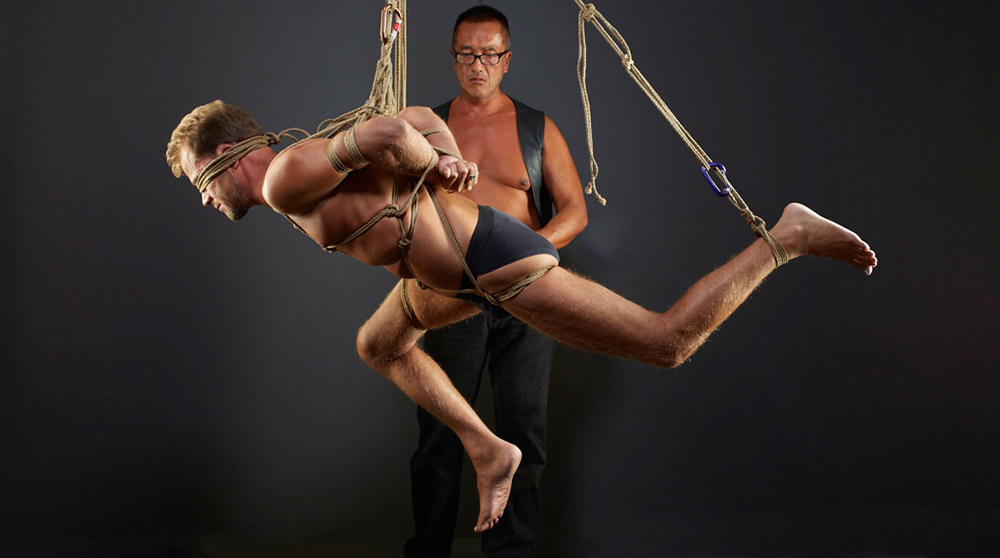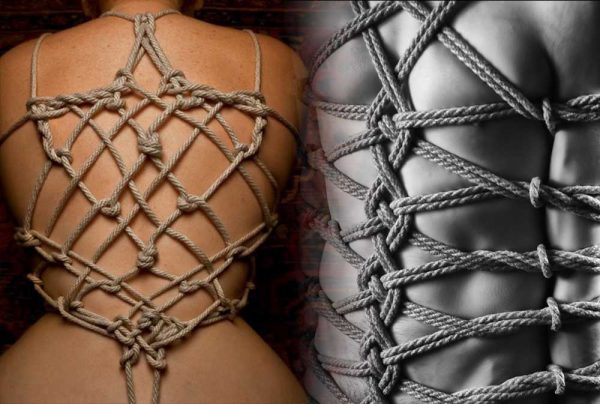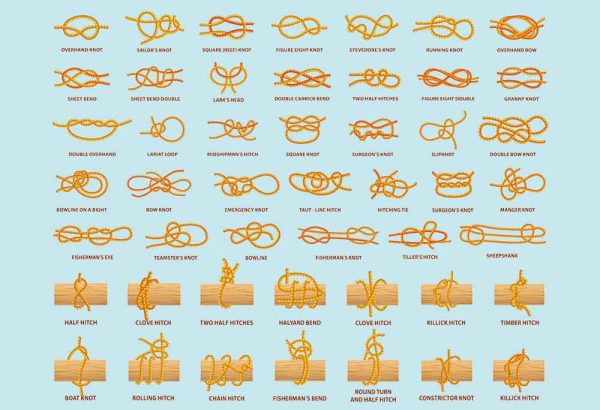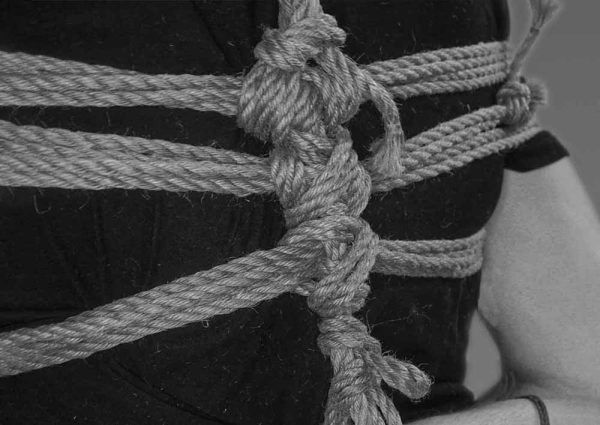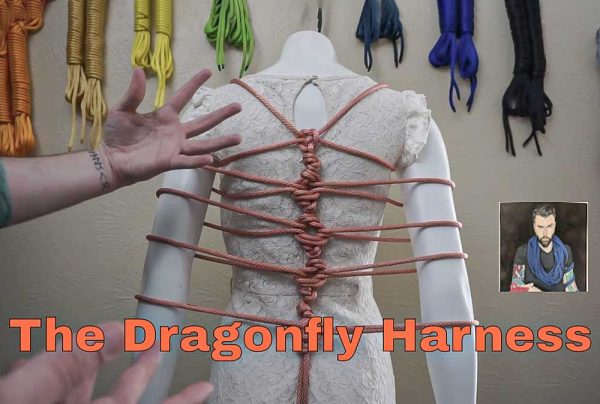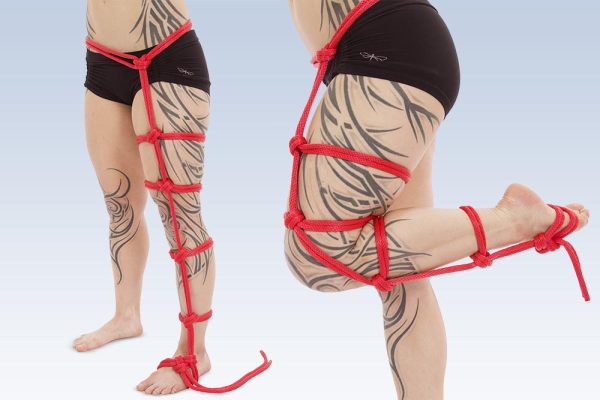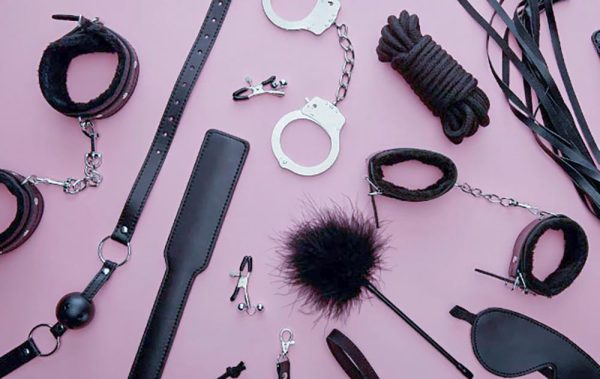Know all about Shibari or Japanese rope play. Know how it can elevate your escapades and strengthen your bond with your partner.
Rope, Knots, and Self-Expression
Are you ready to get tangled up with the ancient (but never forgotten) art of Japanese rope bondage, Shibari? I know I am! I’ll share with you the basics of Shibari, foundational ties and knots, plus product recommendations and other accessories for your transformation. All to aid you in the discovery of rope play as a form of self-expression. Read on!
What is Shibari?
Shibari (which literally translates to “to bind” or “to tie”) is an ancient Japanese way of using rope. In old Japan, in the Warring States or Sengoku period, shibari was used to bind criminals. Today, shibari, or rope play is a popular art form in the BDSM community that requires skills and can fall under the Dom/Sub spectrum. But it’s not exclusively done as a kink or fetish.
Some refer to Shibari as Kinbaku since both terms refer to the same play, so they are also often used interchangeably. Still, they are not the exact same, we can say that Kinbaku is the more modern term that refers to Shibari but if we’re going to look at their translations, Kinbaku means “to tie tightly.”
If you can’t quite put your head around why people find ropes erotic, think of it like this: Shibari is like the Eastern version of Europeans using medieval (torture) devices for intimate play. Although of course, they are now more BDSM-friendly versions.
The Art of Shibari Knots
Shibari rope play demands a certain level of craftsmanship. The rigger or rope top (dominant partner) must be nimble with his hands as he has to take care of almost everything in the play. He has to make sure the rope is the right quality (often jute rope), make sure the rope bunny (sub) is comfortable, and follow the correct steps to tie so it doesn’t lead to any painful reminders outside of the partners’ agreement.
What’s up with Shibari knots anyway? The knots are like complicated lingerie with intricate designs that can’t be made twice (as the bound will be released after the play) so they become more valuable to the one who’s doing them. The restraint, along with the sophisticated knots can be visually and sexually stimulating for some.
The basic shibari knots are:
- Overhand knot
- Overhand on a Bight
- Lark’s Head
- Square Knot
- One-handed Slip Knot
- Double Coin Knot
- Inline Double Coin Knot
- Fisherman's Knot
- Prusik Head Knot
- Prusik Head Inline Knot
- Cross Hitch Friction
- Two Half Hitches
Shibari Ties and Patterns
Shibari knots are the building blocks of Shibari ties and patterns. There are numerous ties and patterns you can do once you start learning. But the basic ones are:
Takate Kote or TK
Also called the “Shibari Gote,” it focuses on suspension ties that require the rigger to communicate with the rope bunny
Hishi Karada or Rope Dress
Hishi means “diamond,” so the tying and patterns are shaped like diamonds. It’s a great base for body harness knots.
Dragonfly
Full-sleeve double-arm ties
An excellent stepping stone for Shibari beginners to jump to the intermediate level.
Ladder Rung or Ladder Tie
It offers the rigger and rope bunny how rope tension feels. This tie is also often called “Ladder Leg,” as it’s usually practiced on the legs.
Web Shibari
Learning Web Shibari will help enthusiasts grasp the understructure of full-body Shibari ties and other customized patterns with many shapes.
There will be various manipulations and versions for each Shibari tie too. There’s an endless design out there to keep your hands busy for years.
The Allure of Shibari Harnesses
Harnesses have always been in the Pride playground. Just like traditional Western harnesses, Shibari harnesses are both functional and visually appealing. It’s common in fashion and achieving the perfect fit. But it’s also almost a constant in BDSM to signify strength, power, and aggression. For sexual play, harnesses can be used to move the rope body around.
Ropes used to make Shibari harnesses should be at least 7 meters, but it’s best to get 10 meters to be sure.
Shibari Tutorial: Learning the Ropes
So, how do you get, get started in Shibari? What comes next after learning what Shibari is and why many are attracted to this rope play? Here’s a quick list of suggestions:
- Identify what part role you want to be in — are you the rigger or the rope bunny? Then, be sure to research what each partner is expected to do and know during sessions.
- Learn the Shibari terminologies. Even the step-by-step tutorials for beginner’s online use terminologies that may you confuse. So, familiarize yourself with Shibari common terms, such as bight, rope tension, etc.
- Attend classes, they can be virtual but if there are on-site Shibari classes you can attend, those would be better. You can learn from these classes and even ask for guidance and tips from experts. Sidenote: Free online videos are also okay, as long as you don’t jump the gun too early and try complicated knots or ties and involve another person,
- If you plan to use Shibari for BDSM play, discuss it first with your partner. Alongside your Shibari learning is educating yourself on BDSM fundamentals for safe and consensual plays.
- Learning something new will always require you to have unlimited patience. It’s okay to not get your first knots right. Enjoy the process and learn at your own pace.
The Significance of Shibari Ropes
Of course, we can’t forget the main star of the show: Shibari Ropes. Ropes used in Shibari are special. They need to be durable, safe for the skin, and aesthetic. It’s an art after all. What’s more, a rigger should know how much rope he needs for his rope play.
Some start with rope-like materials. For instance, beginners can practice on stuffed toys or mannequins and use ribbons instead. This is okay; however, experts recommend practicing with the rope you plan to use in the play to also consider its tension, stretch, and other factors that can impact the results you’re expecting.
The traditional choice for Shibari is jute or asanawa — a natural fiber rope that’s treated to be gentler on the skin. Though it’s preferable to polypropylene or synthetic rope, jute ropes should be maintained with rope oil or rope wax to align the fibers and strengthen the rope’s core. Synth ropes are still okay to use though, especially for plays that may involve fluids. But riggers should note that they produce more friction and can leave harsher rope burns on the rope bunny’s skin.
Exploring Boundaries with Shibari
In kink communities, Shibari or rope play kink is often paired with strength or muscle kink. It’s the visual aesthetic and symbolism of “capturing power,” that spurs many to participate in this play. Usual additional accessories for this play include blindfolds, mouth gags, and muscle suits.
Shibari is also used for roleplay. A rope bunny can pretend to be a captured criminal while the rigger is an officer. Rope bondage centers around the stimulating senses of giving up control (or controlling another), limiting movements to heighten other senses, and exploring other D/S fantasies.
But Shibari is not all about sexual satisfaction. It also fosters a deeper intimate connection between the rigger and the rope bunny. They can communicate more clearly, with more trust fueling the relationship.
Shibari as Self-Expression
Many assume Shibari is exclusively for BDSM rope play — only done for sexual or carnal pleasures. But in truth, many learn Shibari as a medium to create. It develops an individual’s motor and coordination skills. Think about it: Knitting, cross stitching, origami — all of these are art forms that rely heavily on one’s hand and eye coordination. Not to mention the mental capacity required to maintain focus during the activity.
Just as in most art forms, people can use Shibari to express themselves. It’s grounding and meditative, and can even provide structure for those with ADHD.
Conclusion
It’s great to see that an art form from hundreds of years ago is still preserved today despite modern advances that ought to bury it. Plus, Shibari is rope play from the East, but now a well-known creative genre today. Try Shibari for yourself today — make it your new hobby, learn to be creative with your hands, and translate that creativity in the bedroom!

